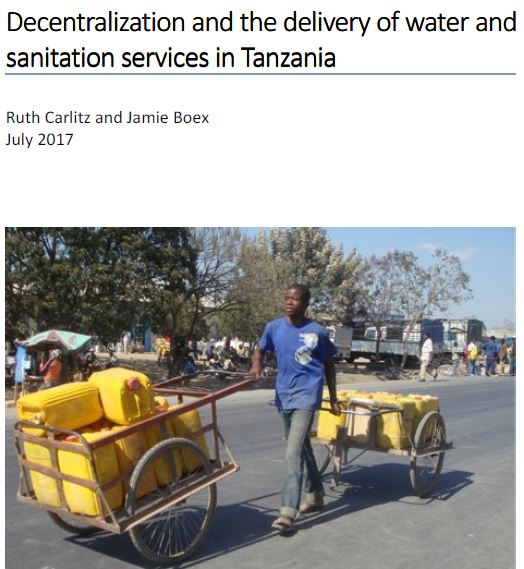Decentralization and the delivery of water and sanitation services in tanzania
Since the 1990s, a majority of countries in the developing world have experienced a decentralization reform of some type or another. Decentralization reforms were advocated in particular in developing countries as a means of increasing citizen voice and participation, improving government accountability and responsiveness, deepening democracy, improving economic performance, reducing bureaucracy, and increasing policy stability (Faguet, 2012; Conyers, 2007; Bird, 1994). In theory, bringing government closer to the governed should facilitate the identification and targeting of needy populations (Galasso and Ravallion, 2005; Crook, 2003), and make it easier for citizens to sanction or reward poor or good behavior on the part of local officials (Faguet, 2012). In light of this, the World Bank and other foreign aid agencies have been supporting decentralization reforms since the 1990s as part of broader efforts to promote “good governance” in recipient countries. The government of Tanzania was a relatively early adopter of decentralization reforms, in keeping with its status of ‘donor darling.’ Beginning in the late 1990s, the country’s deconcentrated regional administrations were significantly reduced and staff and resources were transferred to local governments at district and municipal levels. In 2000, a dedicated Local Government Reform Program (LGRP) was established to support the decentralization reform process through a basketfunded program. LGRP’s original aim was to reform the legal framework and the local government finance and human resource management systems, and enhance local participation and “good governance” more broadly speaking at the local level. In 2004, significant progress was made in the area of fiscal decentralization, as various sectors began employing formula-based grants as a means of transferring recurrent funds to local governments for the implementation of local government services (Tidemand et al., 2010). In parallel, a Local Government Capital Development Grant System (LGCDG) was established to allocate discretionary development grants to local government authorities (LGAs), conditional on their fulfillment of basic minimum conditions regarding the quality of their development plans, financial management, and degree of local transparency and procurement systems. The LGCDG system was declared by the government to be the “preferred modality for transfer of development funds to LGAs.” As part of the intergovernmental fiscal reforms introduced in 2004, an important effort was made to coordinate with sectoral ministries, many of which were pursuing their own efforts and programs to improve public service delivery at the local level. Chief among these was the water sector, which began implementing a parallel set of reforms in 2006. Although the water sector reforms relied on the same basic grant mechanism as the LGCDG to allocate development grants to qualified districts, and was largely guided by the same principles as the broader decentralization reforms, the two reform trajectories have not been fully harmonized. The tension between the parallel reforms is a potential culprit for Tanzania’s laggard status with respect to improving access to water and sanitation services (WSS). Tanzania only made limited progress on its Millennium Development Goals in the areas of water and sanitation (JMP, 2015) and seems unlikely to meet the Sustainable Development Goal target of universal and equitable access to safe and affordable drinking water by 2030 unless the country’s governance and water service delivery arrangements are reexamined. This case study represents an important element of such a reexamination. The lessons it generates will serve not only the Government of Tanzania and its development partners, but other stakeholders interested in promoting equitable and sustainable access to water and sanitation services.
